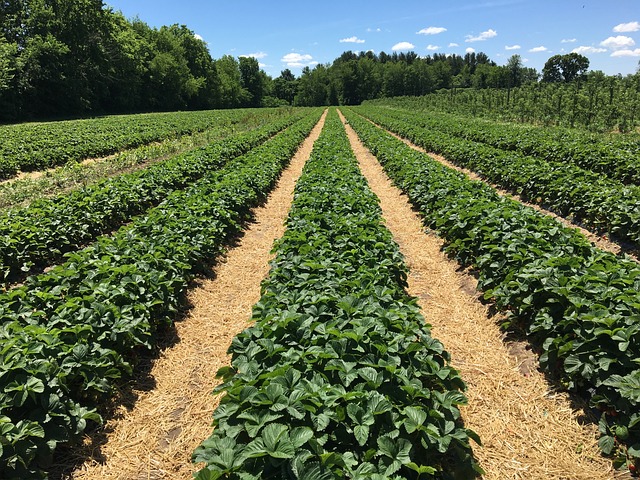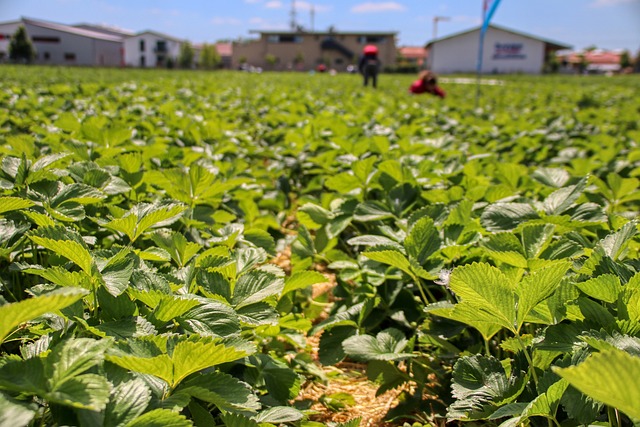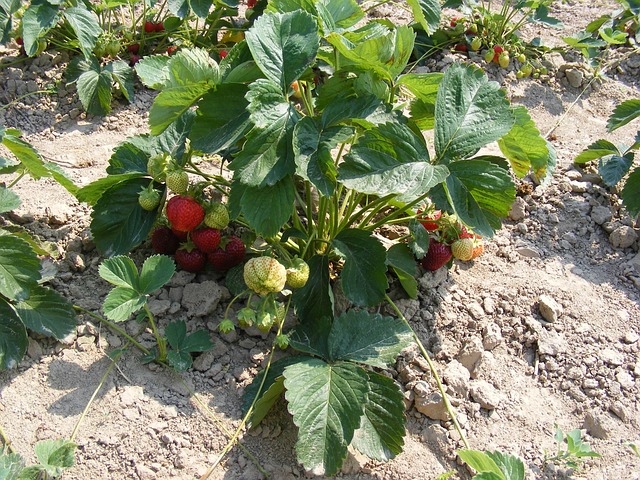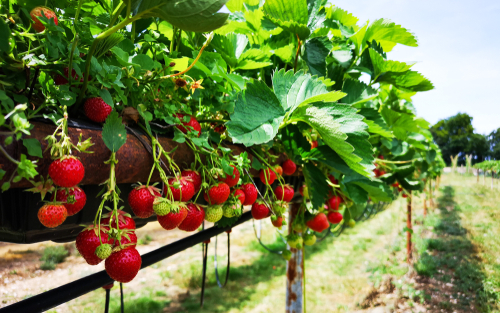Zone 8a is a region that covers parts of the United States, including the southern states like Georgia, Alabama, and Louisiana. If you live in Zone 8a and want to grow strawberries, it’s important to know when to plant them to ensure a successful harvest.
The timing of planting strawberries in Zone 8a can vary depending on the climate and weather conditions in your area.
Generally, the best time to plant strawberries in Zone 8a is in late winter or early spring, between February and March. Planting during this time will give the strawberries enough time to develop and mature before the hot summer months.
However, it’s important to note that planting too early can risk frost damage, while planting too late can result in poor growth and a smaller harvest.
Key Takeaways
- The best time to plant strawberries in Zone 8a is between February and March.
- Planting too early can risk frost damage, while planting too late can result in poor growth and a smaller harvest.
- It’s important to choose the right strawberry varieties, prepare the garden properly, and care for the plants to ensure a successful harvest.
See these other related posts:
- When to Plant Shrubs in Zone 7?
- When to Plant Seminole Pumpkins in Florida?
- When to Plant Rye Grass in Florida?
Understanding Zone 8a

Zone 8a is a subzone of USDA Zone 8, which is characterized by mild winters and hot summers. It covers a large portion of the southern United States, including parts of Texas, Oklahoma, Arkansas, Louisiana, Mississippi, Alabama, Georgia, South Carolina, and North Carolina.
Zone 8a is one of the coldest subzones of Zone 8, with an average minimum temperature of 10 to 15 degrees Fahrenheit (-12 to -9 degrees Celsius).
In the northern United States, Zone 8a is found at higher elevations, where the coldest months are December and January. In the southern United States, Zone 8a is found at lower elevations, where the coldest months are January and February.
The lowest expected temperature in Zone 8a is around 10 to 15 degrees Fahrenheit (-12 to -9 degrees Celsius).
The average date of the last frost in Zone 8a is around March 15th to April 15th. However, this can vary depending on the specific location and weather patterns. It is important to keep track of the weather and soil temperature to determine the best time to plant strawberries.
In general, the best time to plant strawberries in Zone 8a is in the early spring, after the last frost has passed. This will give the plants enough time to establish themselves before the hot summer months arrive. It is also important to choose a sunny location with well-draining soil and a pH level of between 5.5 and 6.5.
Overall, understanding the characteristics of Zone 8a is important when deciding when to plant strawberries. By taking into account the coldest months, lowest expected temperature, and average date of last frost, gardeners can ensure a successful strawberry harvest.
When to Plant Strawberries in Zone 8a
Zone 8a has a mild climate, with mild winters and warm summers. This is an ideal climate for growing strawberries, which can be planted in the fall or early spring. The best time to plant strawberries in Zone 8a is between February and March.
According to the USDA Plant Hardiness Zone Map, Zone 8a has an average minimum temperature of 10 to 15 degrees Fahrenheit. This means that the growing season for strawberries in Zone 8a is typically from late February to early December.
To ensure a good harvest, it is important to plant strawberries during the right time of the year. Planting too early can result in damage from frost, while planting too late can result in smaller yields.
A planting guide for strawberries in Zone 8a recommends planting in late February or early March. This allows the plants to establish themselves before the hot summer months. The last month to plant strawberries in Zone 8a and expect a good harvest is September.
It is important to note that the best time to plant strawberries in Zone 8a may vary depending on the specific location and climate conditions. It is always a good idea to consult a local planting calendar or gardening expert for more specific advice.
In summary, the best time to plant strawberries in Zone 8a is between February and March. This allows the plants to establish themselves before the hot summer months and ensures a good harvest. However, it is important to consult local planting guides and calendars for more specific advice.
Choosing the Right Strawberry Varieties

When it comes to growing strawberries in Zone 8a, choosing the right cultivar is crucial. There are three main types of strawberries: June-bearing, everbearing, and day-neutral cultivars.
June-bearing cultivars produce a large crop of berries in early summer, while everbearing strawberries produce a smaller crop in early summer and a second crop in the fall. Day-neutral cultivars produce fruit throughout the growing season.
Some popular June-bearing cultivars for Zone 8a include Delmarvel and Earliglow. Delmarvel is known for its large, sweet berries, while Earliglow is prized for its early ripening and disease resistance. Allstar is another popular June-bearing cultivar that is known for its large, firm berries and disease resistance.
For those looking for everbearing strawberries, Ozark Beauty is a great choice for Zone 8a. This cultivar produces a medium-sized berry and is known for its disease resistance. Seascape is another popular everbearing cultivar that produces large, sweet berries throughout the growing season.
If you’re interested in day-neutral cultivars, there are several options to choose from. Tribute is a popular day-neutral cultivar that produces medium-sized, sweet berries. Albion is another day-neutral cultivar that is known for its large, firm berries and disease resistance.
When choosing a strawberry cultivar, it’s important to consider factors such as disease resistance, berry size, and growing season. By selecting the right cultivar for your needs, you can ensure a successful strawberry harvest in Zone 8a.
Preparing the Garden for Planting
Before planting strawberries in Zone 8a, it is important to prepare the garden properly. This will ensure that the plants have the best possible chance of growing and producing a healthy crop.
Soil Preparation
Strawberries grow best in well-drained soil that is rich in humus. It is important to test the soil pH level to ensure that it is between 5.5 and 6.5. If the pH level is too high, add sulfur to lower it. If it is too low, add lime to raise it.
Compost and Manure
Adding compost or well-rotted manure to the soil before planting will provide the plants with the necessary nutrients to grow and produce a healthy crop. It is recommended to add a layer of compost or manure to the soil and work it in to a depth of 6-8 inches.
Drainage
Strawberries require good drainage to prevent the roots from becoming waterlogged. If the soil does not drain well, it is recommended to plant the strawberries in raised beds or containers.
Fertilizer

Strawberries are heavy feeders and require regular fertilization. It is recommended to fertilize the plants with a balanced fertilizer at planting time and again after the first fruiting. Avoid over-fertilizing, as this can lead to excessive vegetative growth and poor fruit production.
By following these guidelines for preparing the garden, the plants will have the best possible chance of growing and producing a healthy crop.
Planting Process and Care
When planting strawberries in zone 8a, it is important to ensure that the plants are well-protected from extreme weather conditions. It is recommended to plant them in early spring, as soon as the soil is workable. This will give the plants plenty of time to establish themselves before the hot summer months arrive.
When planting strawberry runners, it is best to space them about 18-24 inches apart in rows that are 3-4 feet apart. This will give the plants enough room to grow and spread out. It is important to keep the soil moist during the first few weeks after planting. This will help the plants establish strong roots.
Nursery plants should be planted at the same depth they were growing in their containers. It is important to take care not to bury the crown of the plant, as this can lead to rotting.
After planting, it is recommended to cover the plants with a layer of straw or other mulch. This will help to protect the plants from extreme temperatures and keep the soil moist.
Watering is an important part of caring for strawberry plants. They should be watered deeply once a week, or more often if the weather is particularly hot and dry. It is important to avoid getting the leaves wet when watering, as this can lead to fungal diseases.
Strawberries are low-growing, leafy plants that require plenty of sun and good air circulation. It is important to keep the plants well-spaced to allow for good air flow. This will help to prevent fungal diseases from taking hold.
In summary, when planting strawberries in zone 8a, it is important to protect the plants from extreme weather conditions, space them properly, keep the soil moist, and provide them with plenty of sun and good air circulation. With proper care, strawberries can be a delicious and rewarding addition to any garden.
Harvesting and Protecting Your Strawberries
When it comes to harvesting strawberries in zone 8a, it’s important to wait until the berries are fully ripened on the plant. For most varieties, this means leaving the berries on the plant for a day or two after they are fully colored.
The only way to know for sure is a taste test. Once the berries are ready, carefully pick them by the stem to avoid damaging the delicate fruit.
To protect your strawberries from birds and other pests, consider using netting or a bird scarer. Netting can be draped over the plants and secured with stakes to keep birds from eating the fruit. A bird scarer, such as a plastic owl or hawk, can also be effective in scaring away birds.
In addition to protecting your strawberries from pests, it’s important to protect them from frost. In zone 8a, frost can occur as late as February or as early as March. To protect your plants, consider adding a layer of straw mulch over the plants in the fall.
Keep a thin layer of straw (0.5-1 inch) over the plants when you remove it. The plants will grow through it and the straw will help suppress weeds, reduce disease, and keep the strawberries off the soil.
Overall, harvesting and protecting your strawberries in zone 8a requires careful attention to detail and proper timing. By following these tips, you can enjoy a bountiful harvest of delicious, red fruits with seeds on the outside.
Culinary Uses of Strawberries

Strawberries are a versatile fruit that can be used in a variety of culinary applications. They are often used in desserts, but can also be used in savory dishes and salads. Here are some culinary hints and ideas for using strawberries in your cooking:
- Desserts: Strawberries are a classic dessert fruit and can be used in a variety of ways. They are often used in pies, tarts, and cakes, but can also be used in mousse, trifle, and other creamy desserts. For a simple and elegant dessert, try serving sliced strawberries with melted chocolate and whipped cream.
- Soft Fruit: Strawberries are part of a group of fruits known as soft fruit, which also includes raspberries, blackberries, and boysenberries. These fruits are delicate and have a short shelf life, so it’s important to use them quickly after purchasing.
- Summer Pudding: Summer pudding is a classic British dessert that is made with a mixture of summer berries, including strawberries. The berries are soaked in a mixture of sugar and balsamic vinegar and then layered with slices of bread. The pudding is then chilled overnight and served with cream.
- Salads: Strawberries can add a sweet and tangy flavor to salads. They pair well with spinach, arugula, and other leafy greens. Try tossing sliced strawberries with balsamic vinegar and a sprinkle of sugar for a simple and delicious salad.
Overall, strawberries are a versatile and delicious fruit that can be used in a variety of culinary applications. Whether you’re making a sweet dessert or a savory salad, strawberries are sure to add a burst of flavor to your dish.
Growing Strawberries Indoors and from Seeds
Growing strawberries indoors and from seeds is a great way to enjoy fresh, juicy strawberries all year round. In Zone 8a, it is possible to grow strawberries indoors throughout the year, as long as you have the right growing conditions.
To grow strawberries indoors, you will need a sunny window or grow lights to provide enough light for the plants. Strawberry seeds can be started indoors in the late winter or early spring, about 6-8 weeks before the last frost date. The seeds should be planted in a well-draining potting mix, and kept moist but not waterlogged.
Once the seedlings have emerged, they should be thinned to one seedling per pot. The plants should be kept in a warm, sunny location, and watered regularly. Fertilizer can be applied every 2-3 weeks to encourage growth.
When the plants are about 4-6 weeks old, they can be transplanted into larger pots or into a garden bed. If transplanting into a garden bed, it is important to choose a sunny location with well-draining soil.
Growing strawberries from seeds can be a rewarding experience, but it does require patience and attention to detail. With the right growing conditions and care, you can enjoy fresh strawberries all year round.
Maintaining Your Home Garden

Maintaining a home garden requires regular attention to ensure healthy growth and a bountiful harvest. One of the most important aspects of garden maintenance is weed control.
Weeds can compete with your plants for nutrients and water, so it is important to remove them regularly. This can be done by hand or with the help of a hoe or cultivator. Mulching around your plants can also help to suppress weed growth.
In addition to weed control, proper fertilization is also essential for a healthy garden. Liquid fertilizers can be a great option for home gardeners, as they are easy to apply and can provide quick results. It is important to follow the manufacturer’s instructions for application rates and frequency.
Another important aspect of maintaining a home garden is following a gardening schedule. This can help ensure that you are planting at the appropriate times and can also help you plan for future harvests.
It is important to consider the specific needs of the vegetables and herbs you are growing, as they may have different planting and harvesting schedules.
Finally, it is important to regularly monitor your plants for any signs of pests or diseases. Early detection can help prevent the spread of issues and can save your plants from damage. If you do notice any issues, there are a variety of organic and chemical options available to help treat them.
Overall, maintaining a home garden can require some effort, but the rewards are well worth it. With proper weed control, fertilization, and monitoring, you can enjoy a bountiful harvest of fresh vegetables and herbs.
Frequently Asked Questions
What is the best time of year to plant bare root strawberries in zone 8a?
The best time to plant bare root strawberries in zone 8a is in late winter or early spring, around February or March. This allows the plants to establish strong roots before the hot summer weather arrives.
What are some companion plants for strawberries in zone 8a?
Companion plants for strawberries in zone 8a include herbs like thyme and oregano, as well as vegetables like lettuce and spinach. These plants can help deter pests and provide additional nutrients to the soil.
When should everbearing strawberries be planted in zone 8a?
Everbearing strawberries can be planted in zone 8a in both the spring and fall. Planting in the spring will provide a harvest in the summer, while fall planting will result in a harvest the following spring.
What is the latest time of year to plant strawberries in zone 8a?
The latest time to plant strawberries in zone 8a is in early fall, around September or October. This allows the plants to establish roots before the winter cold sets in.
What is the ideal month to plant strawberries in zone 8a?
The ideal month to plant strawberries in zone 8a is February. This allows the plants to establish roots before the hot summer weather arrives.
Do strawberries require morning or afternoon sun in zone 8a?
Strawberries in zone 8a prefer morning sun and afternoon shade to protect them from the hot afternoon sun. This will help prevent the plants from drying out and scorching during the hottest part of the day.

Hey, I’m Lisa and I’ve been an avid gardener for over 30 years. I love writing, talking and living in the garden! Feel free to connect with me on my socials below


